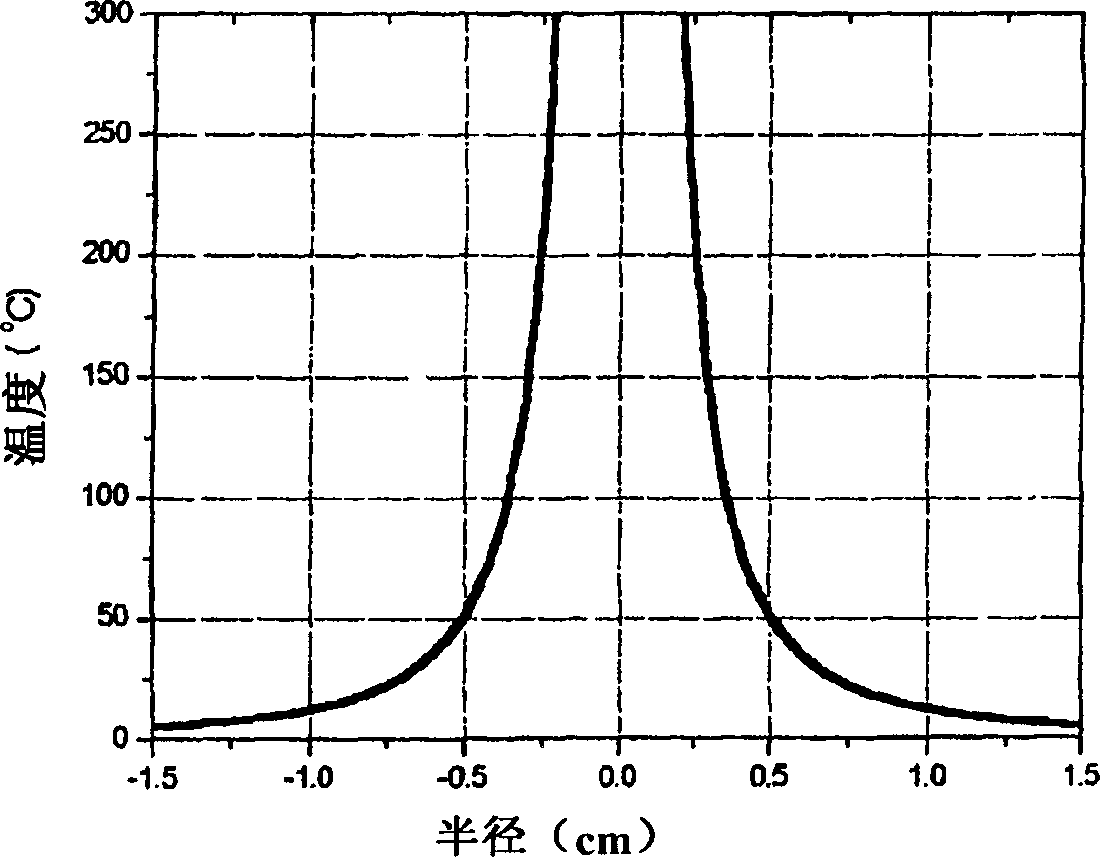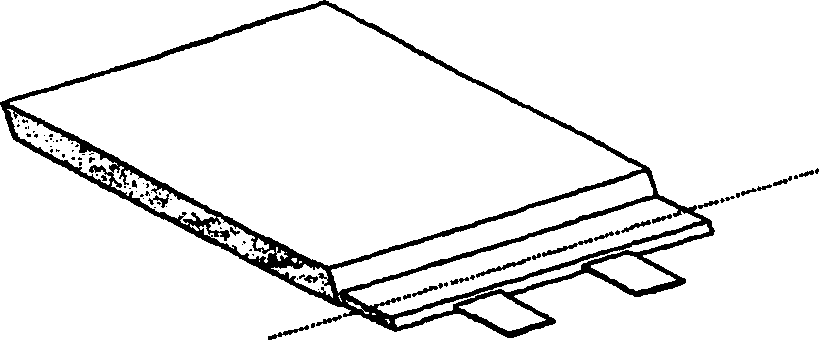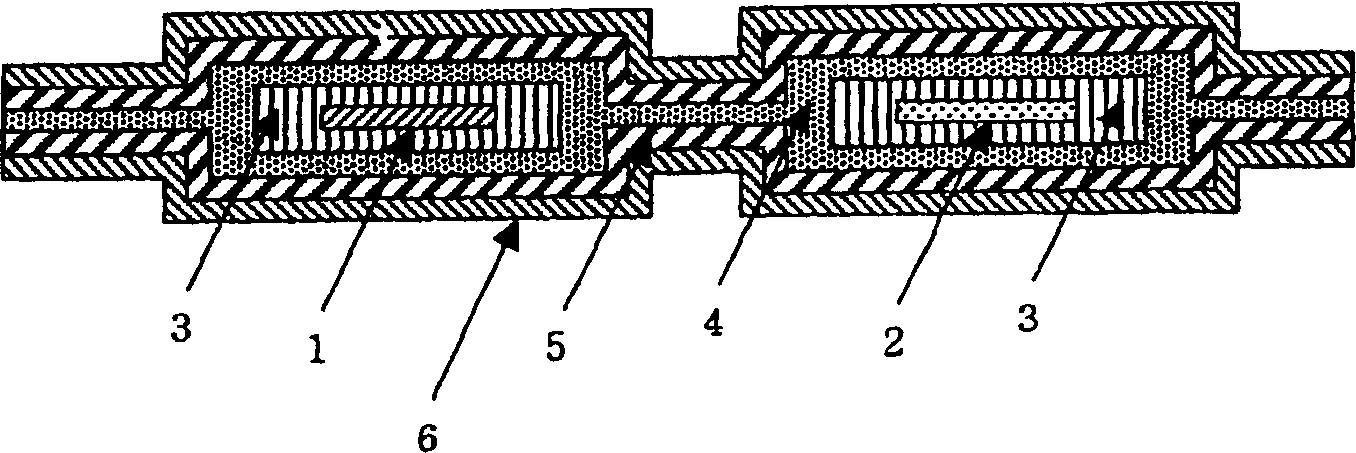Secondary battery with an improved safety
A secondary battery, battery technology, applied in small-sized batteries/battery packs, lithium batteries, battery pack components, etc., can solve safety problems and other issues, and achieve the effect of suppressing heat generation and improving safety
- Summary
- Abstract
- Description
- Claims
- Application Information
AI Technical Summary
Problems solved by technology
Method used
Image
Examples
Embodiment 1
[0081] 1M LiPF with an EC:EMC ratio of 1:2 6 solution as electrolyte, artificial graphite as anode, and LiCoO 2 used as the positive electrode. A 383562-sized lithium polymer cell was then fabricated by conventional methods, enclosed within an aluminum composite package. In this packing step, in order to connect the aluminum layer of the packing to the positive terminal, a part of the end film covering the positive terminal is removed, and then a metal aluminum sheet is inserted into the removed part and thermally fused. Batteries were produced in this way.
Embodiment 2
[0083] A battery was manufactured in the same manner as in Example 1, except that a metallic nickel sheet was inserted to connect the negative terminal to the aluminum layer of the package.
Embodiment 3
[0085] 1M LiPF with an EC:EMC ratio of 1:2 6 solution as electrolyte, artificial graphite as anode, and LiCoO 2 used as the positive electrode. A 383562-sized lithium polymer cell was then fabricated by conventional methods, enclosed within an aluminum composite package. In this packaging step, a part of the outer polymer layer of the packaging is removed to expose the aluminum layer to the outside, and then the exposed aluminum layer and the positive terminal are respectively welded to the aluminum sheet so that they are electrically connected to each other. Batteries were produced in this way.
PUM
 Login to View More
Login to View More Abstract
Description
Claims
Application Information
 Login to View More
Login to View More - R&D
- Intellectual Property
- Life Sciences
- Materials
- Tech Scout
- Unparalleled Data Quality
- Higher Quality Content
- 60% Fewer Hallucinations
Browse by: Latest US Patents, China's latest patents, Technical Efficacy Thesaurus, Application Domain, Technology Topic, Popular Technical Reports.
© 2025 PatSnap. All rights reserved.Legal|Privacy policy|Modern Slavery Act Transparency Statement|Sitemap|About US| Contact US: help@patsnap.com



